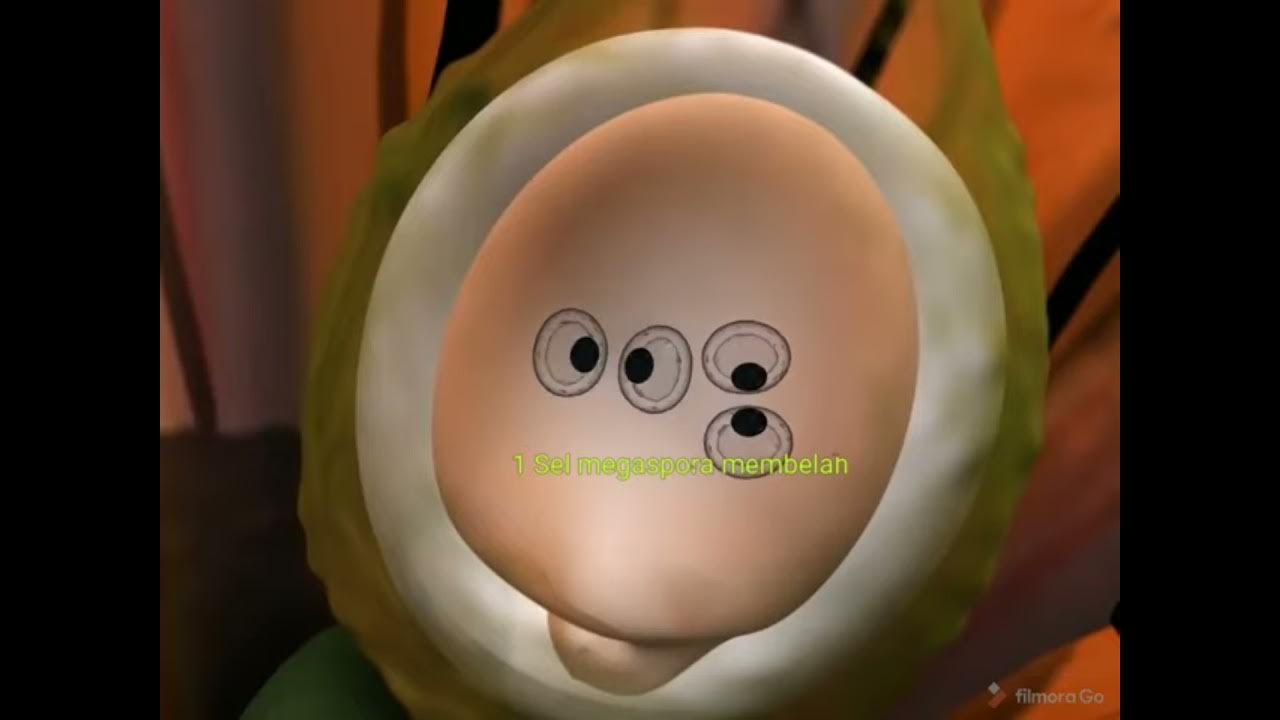IPA Kelas 9 : Sistem Perkembangbiakan Tumbuhan (Part 3 : Pembuahan Ganda pada Tumbuhan Angiospermae)
Summary
TLDRThis video, hosted by Kak Kamil, covers generative reproduction in flowering plants (angiosperms) for 9th-grade science. Kamil explains the two main types of plant reproduction: vegetative (asexual) and generative (sexual). Focusing on the generative process, he details flower structures, including male (stamen) and female (pistil) organs, and the functions of various parts like petals and sepals. He then explores the fertilization stages, the formation of pollen tubes, and the double fertilization process, where one sperm fertilizes an egg to form a zygote, and another forms endosperm for seed nourishment. This complex yet fascinating process is explained step-by-step to aid understanding.
Takeaways
- 🌸 The topic of the lesson is reproductive processes in flowering plants (angiosperms).
- 🔬 Reproduction in plants can occur through two main processes: asexual (vegetative) reproduction and sexual (generative) reproduction.
- 🌿 Vegetative reproduction happens through parts like stems, roots, and leaves, with examples including cutting and grafting.
- 🌼 Generative reproduction involves the fusion of male and female gametes, and the flower is the reproductive organ.
- 🌸 Flowers can have male parts (stamen), female parts (pistil), or both, with complete flowers containing both male and female reproductive organs.
- 🧬 The stamen, which includes the anther and filament, produces pollen grains containing male gametes (sperms).
- 🌺 The pistil, comprising the stigma, style, and ovary, contains ovules where eggs (ovum) are formed through meiosis.
- 🍃 Pollination occurs when pollen grains attach to the stigma, leading to the formation of a pollen tube that delivers sperm to the ovule for fertilization.
- 🔄 Double fertilization happens in flowering plants, where one sperm fertilizes the egg to form a zygote, and the other fertilizes the central cell to form endosperm, providing nourishment to the seed.
- 🌱 After fertilization, the ovule develops into a seed, and the surrounding ovary becomes a fruit, ensuring the plant’s life cycle continues.
Q & A
What are the two types of reproduction in angiosperms?
-The two types of reproduction in angiosperms are vegetative (asexual) reproduction and generative (sexual) reproduction.
What is vegetative reproduction in plants?
-Vegetative reproduction is an asexual process that involves parts of the plant such as the stem, roots, or leaves to form a new plant. Examples include cutting, grafting, and reproduction through the edges of leaves.
What is generative reproduction in angiosperms?
-Generative reproduction in angiosperms is sexual reproduction that involves the fusion of male and female gametes. The male reproductive organ is the stamen (benang sari), and the female reproductive organ is the pistil (putik).
What are the parts of a flower involved in generative reproduction?
-The flower parts involved in generative reproduction include the stamen (benang sari) as the male organ, and the pistil (putik) as the female organ. The stamen consists of the anther and filament, while the pistil consists of the stigma, style, ovary, and ovules.
What is the role of the stamen in reproduction?
-The stamen, which consists of the anther and filament, produces pollen grains containing male gametes (sperm cells) that are necessary for fertilization in plants.
What is the function of the pistil in flower reproduction?
-The pistil contains the ovary, which houses ovules. It also consists of the stigma and style, which are involved in receiving pollen and guiding the male gametes to the ovule for fertilization.
What is the process of pollination?
-Pollination is the process where pollen grains from the anther (male organ) attach to the stigma (female organ). This can happen through wind, insects, or animals, and is the first step in fertilization.
What happens after pollination occurs in angiosperms?
-After pollination, the pollen grain absorbs water, germinates, and forms a pollen tube. The tube guides sperm cells to the ovule in the ovary, where fertilization occurs.
What is double fertilization in angiosperms?
-Double fertilization is a process unique to angiosperms where one sperm cell fertilizes the egg cell to form a zygote, while another sperm cell fuses with the central cell to form the endosperm, which provides nutrition to the developing embryo.
What is the role of endosperm in seed development?
-The endosperm serves as a food reserve for the developing seed, providing essential nutrients for the growth of the embryo after fertilization.
Outlines

هذا القسم متوفر فقط للمشتركين. يرجى الترقية للوصول إلى هذه الميزة.
قم بالترقية الآنMindmap

هذا القسم متوفر فقط للمشتركين. يرجى الترقية للوصول إلى هذه الميزة.
قم بالترقية الآنKeywords

هذا القسم متوفر فقط للمشتركين. يرجى الترقية للوصول إلى هذه الميزة.
قم بالترقية الآنHighlights

هذا القسم متوفر فقط للمشتركين. يرجى الترقية للوصول إلى هذه الميزة.
قم بالترقية الآنTranscripts

هذا القسم متوفر فقط للمشتركين. يرجى الترقية للوصول إلى هذه الميزة.
قم بالترقية الآنتصفح المزيد من مقاطع الفيديو ذات الصلة

IPA Kelas 9 : Sistem Perkembangbiakan Tumbuhan (Part 2 : Bagian Bunga dan Penyerbukan)

BIOLOGI Kelas 10 - Kingdom Plantae (Part 2) : Spermatophyta | GIA Academy

IPA Kelas 9 : Sistem Perkembangbiakan Tumbuhan (Part 1 : Perkembangbiakan Vegetatif)

IPA Kelas 9 : Listrik Statis 1 (Konsep Dasar Listrik Statis)

Video Reproduksi Tumbuhan

KINGDOM PLANTAE | CIRI-CIRI DAN KLASIFIKASINYA
5.0 / 5 (0 votes)
